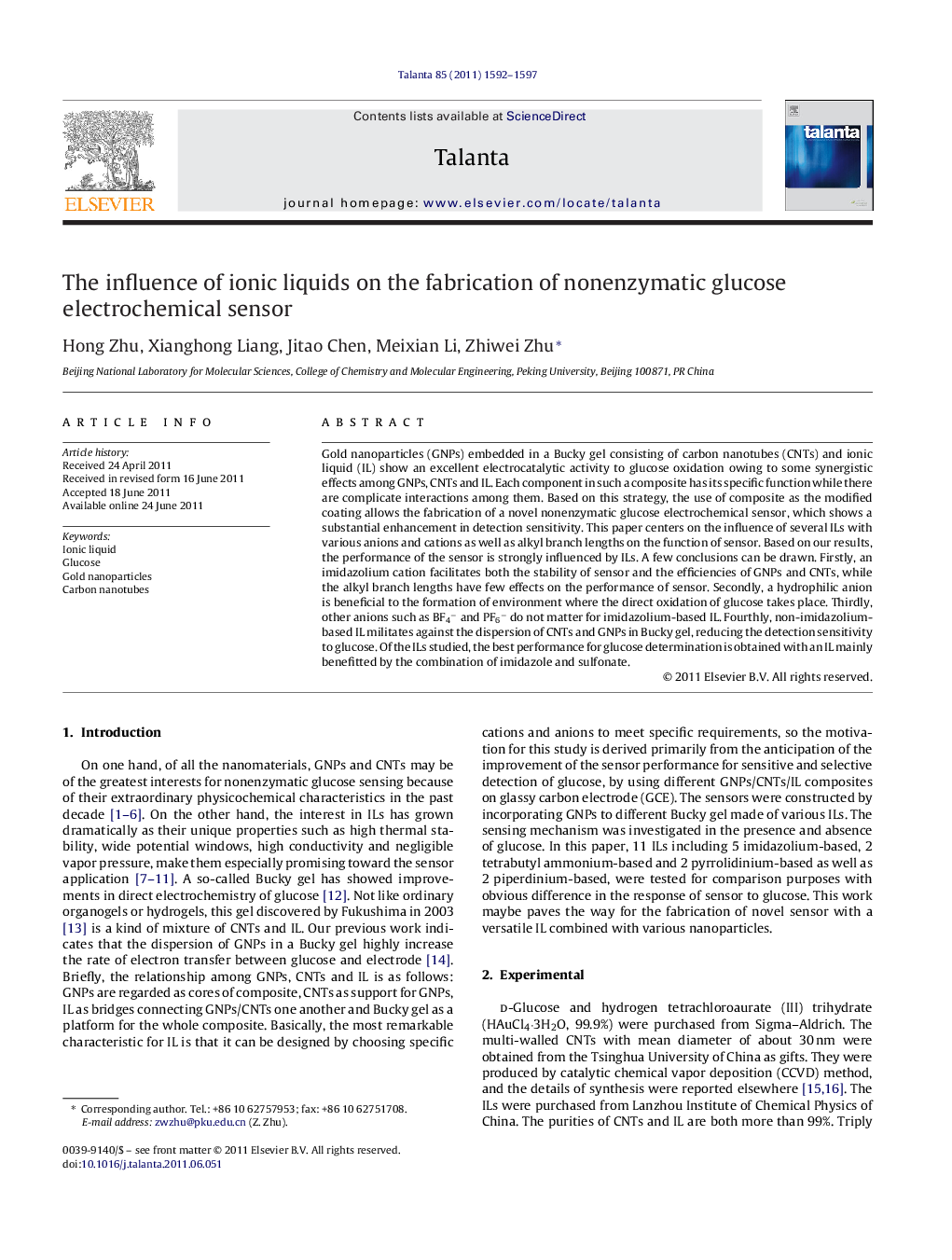| Article ID | Journal | Published Year | Pages | File Type |
|---|---|---|---|---|
| 10560538 | Talanta | 2011 | 6 Pages |
Abstract
Gold nanoparticles (GNPs) embedded in a Bucky gel consisting of carbon nanotubes (CNTs) and ionic liquid (IL) show an excellent electrocatalytic activity to glucose oxidation owing to some synergistic effects among GNPs, CNTs and IL. Each component in such a composite has its specific function while there are complicate interactions among them. Based on this strategy, the use of composite as the modified coating allows the fabrication of a novel nonenzymatic glucose electrochemical sensor, which shows a substantial enhancement in detection sensitivity. This paper centers on the influence of several ILs with various anions and cations as well as alkyl branch lengths on the function of sensor. Based on our results, the performance of the sensor is strongly influenced by ILs. A few conclusions can be drawn. Firstly, an imidazolium cation facilitates both the stability of sensor and the efficiencies of GNPs and CNTs, while the alkyl branch lengths have few effects on the performance of sensor. Secondly, a hydrophilic anion is beneficial to the formation of environment where the direct oxidation of glucose takes place. Thirdly, other anions such as BF4â and PF6â do not matter for imidazolium-based IL. Fourthly, non-imidazolium-based IL militates against the dispersion of CNTs and GNPs in Bucky gel, reducing the detection sensitivity to glucose. Of the ILs studied, the best performance for glucose determination is obtained with an IL mainly benefitted by the combination of imidazole and sulfonate.
Related Topics
Physical Sciences and Engineering
Chemistry
Analytical Chemistry
Authors
Hong Zhu, Xianghong Liang, Jitao Chen, Meixian Li, Zhiwei Zhu,
